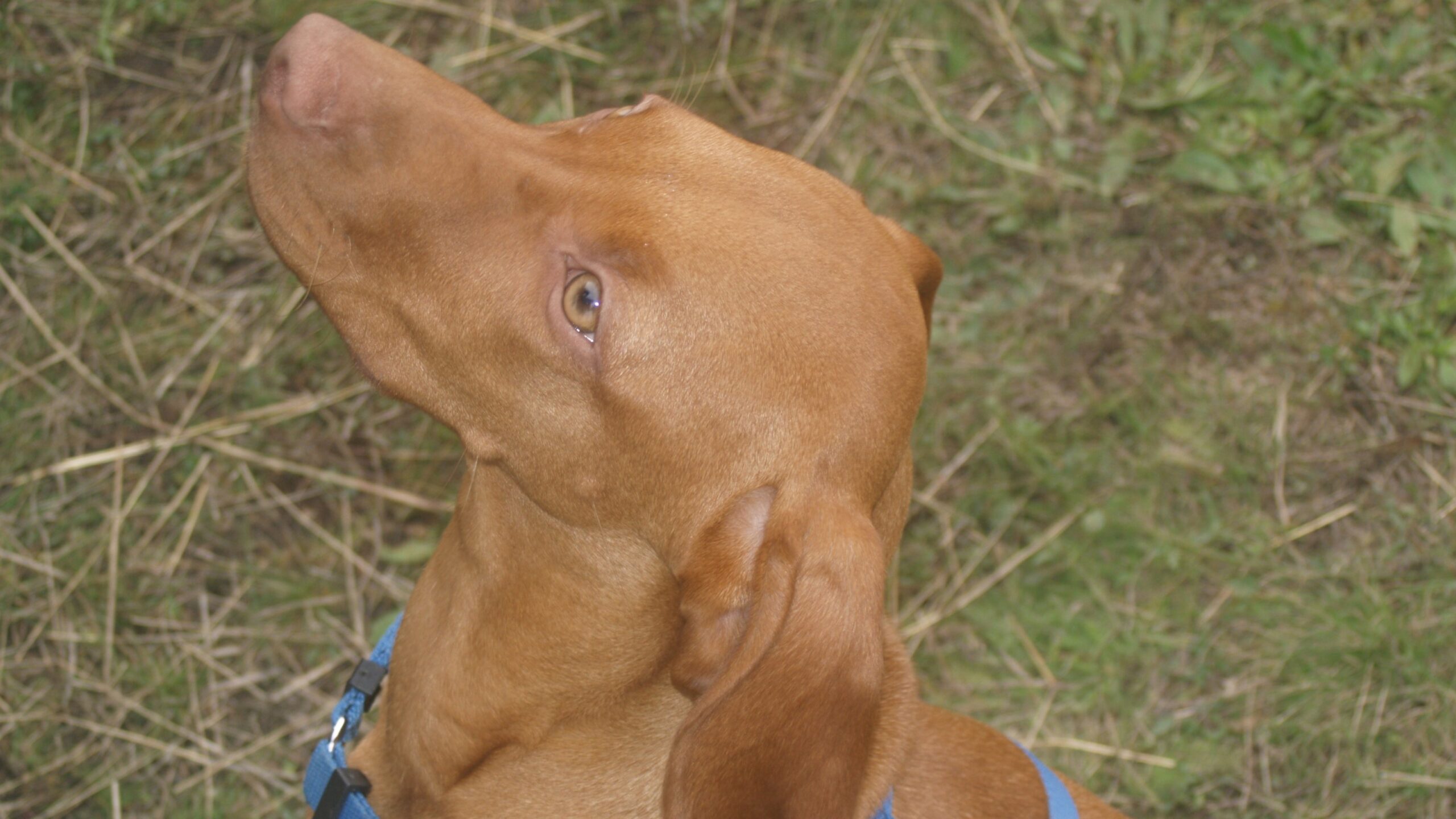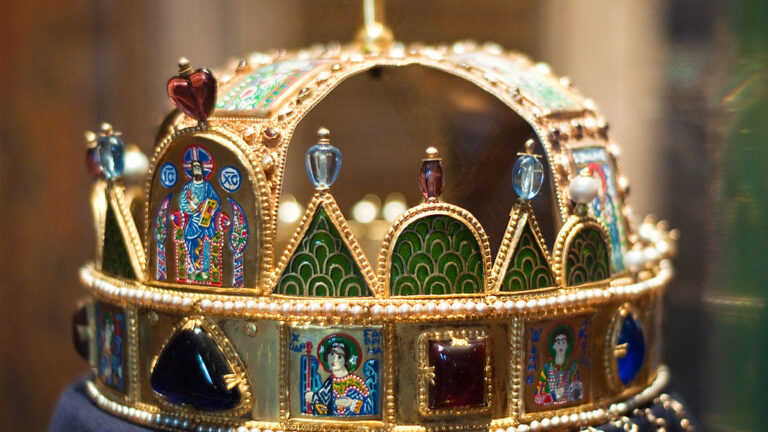Today is International Dog Day! To mark the occasion and celebrate our faithful four-legged friends, we are publishing a short introduction of the nine, officially recognized Hungarian dog breeds, all of which are Hungarikums. While purebred dogs are wonderful, so are their mixed breed peers, who can be just as adorable, so we salute them, too! On this day you may also want to donate to a dog shelter near you to assist the work of the selfless volunteers who rescue abused and abandoned dogs.
Magyar agár or Hungarian Greyhound
While greyhound-type dogs live in the Carpathian Basin already thousands of year ago, the breeding of this specific dog only began just over a hundred years ago. The magyar agár is a large-sized sighthound that has a heavier bone structure than the greyhound. It has a wedge-shaped head, a shorter snout, and thicker coat than the greyhound. It is used for hunting and coursing, and is also kept as a companion. Its coat can be of different colours, such as blue, blue-white, brown, wolf-grey, black and tan.
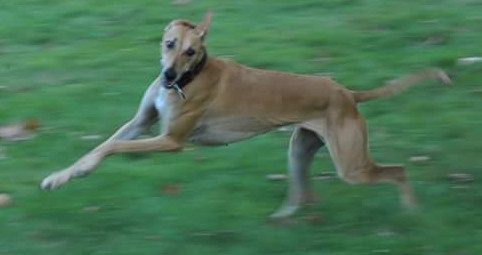
Komondor (plural Komondorok)
The white Komondorok have a distinctively imposing presence, if not for their large stature and heavy musculature, then for their most striking feature — a tasselled white coat consisting of tight cords similar to Rastafarian dreadlocks. Bred as a chief protector of herds, the Komondor is wary of strangers and fiercely protective. In households today, the Komondor serves as a dutiful guard dog for its human flock as well as a devoted companion. This dog was brought to Hungary by the Cumans, and its earliest written mention is from the middle of the 16th century.
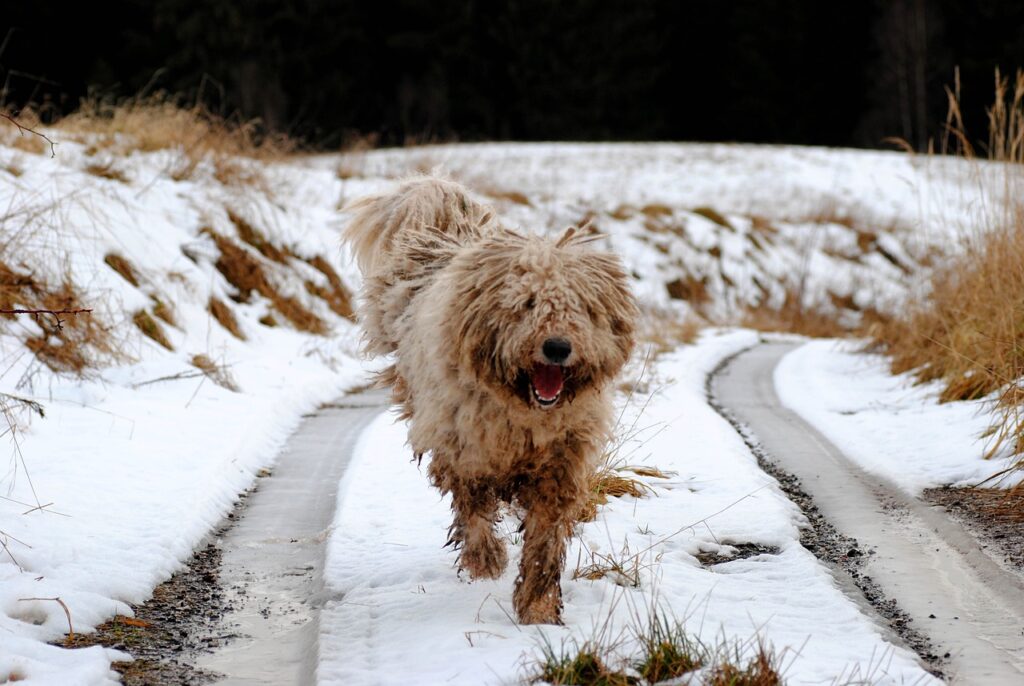
Kuvasz (plural Kuvaszok)
A working dog of impressive size and strength, the imposing and thickly coated Kuvasz is a beautiful, smart, profoundly loyal, but challenging breed. This snow-white livestock guardian of luxuriant coat can stand as high as 30 inches at the shoulder, and weigh between 70 and 110 pounds. Despite their size and strength, Kuvaszok are quick-moving, nimble-footed protectors when meeting a threat. The breed’s fans say that the elegantly proportioned head ‘is considered to be the most beautiful part of the Kuvasz.’ The Kuvasz is believed to be the most ancient Hungarian dog breed that may have arrived in the Carpathian Basin at the time of the Hungarian Conquest in the 10th century.
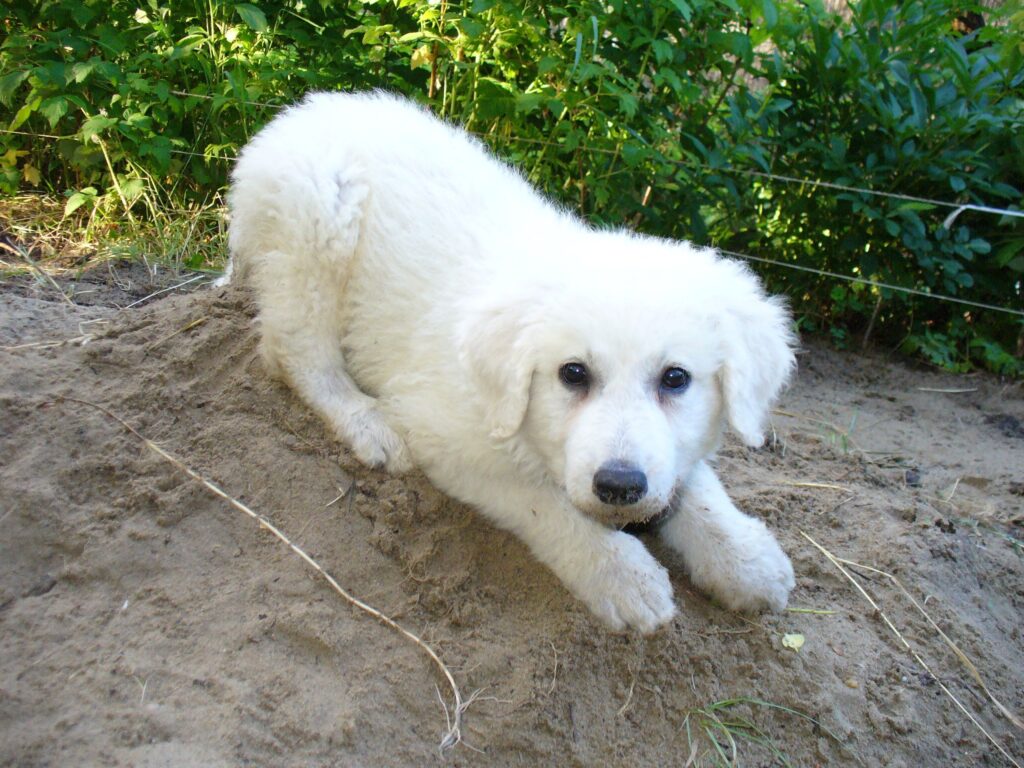
Puli
The Puli is the breed probably most associated with the Magyars and perhaps the most popular and well-known of all Hungarian dogs. Originally, it is a sheepdog that herds quite large flocks of sheep, but today most Pulis live as companions in urban family homes. It is famous for its corded coats, cheerful personality, and for the fact that Facebook-founder Mark Zuckerberg also owns one. Pulis are usually black or white. Beware, though: a Puli s quite a barker!
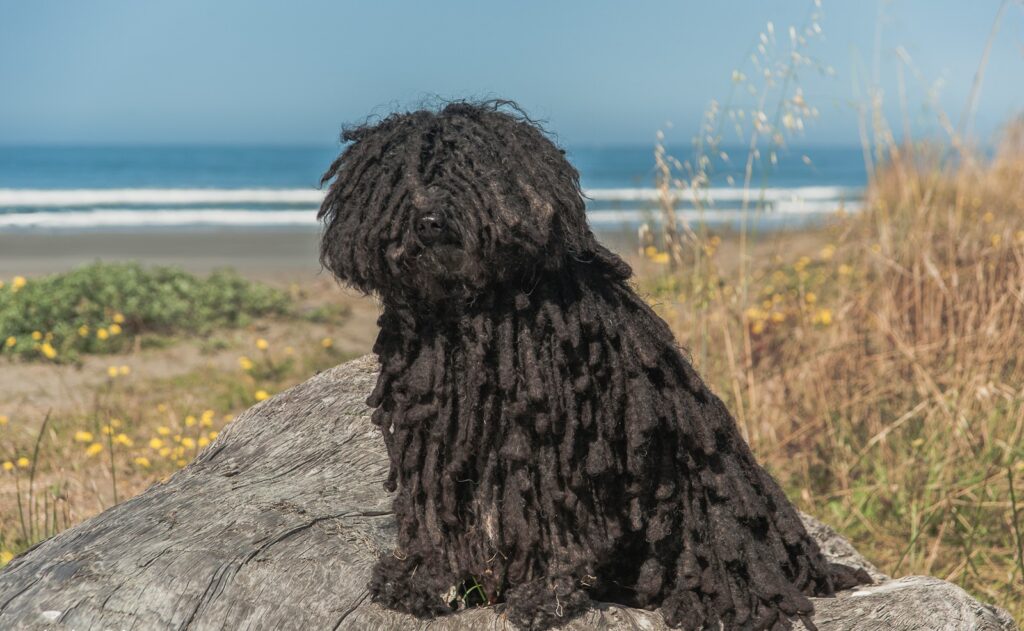
Pumi
Our present day Pumi (Pumik in plural) is the result of centuries of selection by shepherds. The selection was directed towards performing tasks which were based on the uniqueness of the environment and the livestock in the Carpathian Basin. The Hungarian Grey Cattle and the Racka sheep are very hardy and originally lived off the land in a semi-wild state. There was a need for a fast, spirited, decisive dog, capable of completing a task independently; one who is perfectly capable of assessing the given situation and to make decisions – correctly – because of its strong desire to please; a quick learner to the point of seemingly reading its owner’s mind. And that dog is the Pumi! This breed is only recommended for owners who can provide it with sufficient stimulus, and whose neighbours are willing to put up with the plenty of barking…
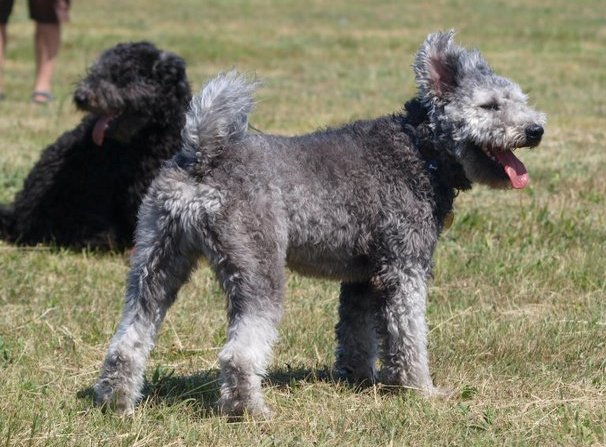
Mudi
The Mudi is a medium-sized Hungarian herding dog, purposely bred for work. It has a somewhat funny appearance, with a foxlike head, but is overall a well-muscled, moderate-boned, and firm-bodied dog with spitz-like qualities. It is the newest Hungarian breed, as its purposeful breeding only began in the 1930s. The first Mudis were presented in 1936. The Federation Cynologique Internationale (FCI) officially recognized the breed in 1966, while the United Kennel Club recognized it in 2006. It is lively, tireless, and extremely loyal. Many consider it a worthy rival of the Border Collie as one of the best herding dogs in the world.
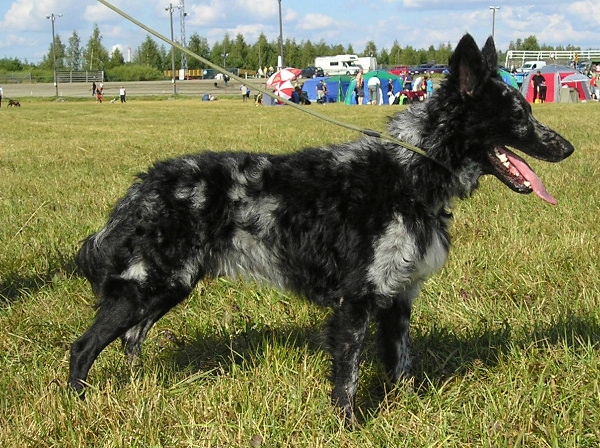
Vizsla or Hungarian Vizsla
The Vizsla is a versatile, red-coated gundog whose popularity has been steadily increasing worldwide with each passing year. It is easily recognized by his sleek golden-rust coat, and it is the picture of a lean, light-footed hunter’s companion. As a hunter expected to work closely with humans, Vizslas form a tight bond with their owners and hate to be left alone. They excel at various sports and activities, so are ideal jogging or biking companions. However, experts warn that if one does not have the time to encourage their Vizsla to fully use its brain, it is not the dog for them.
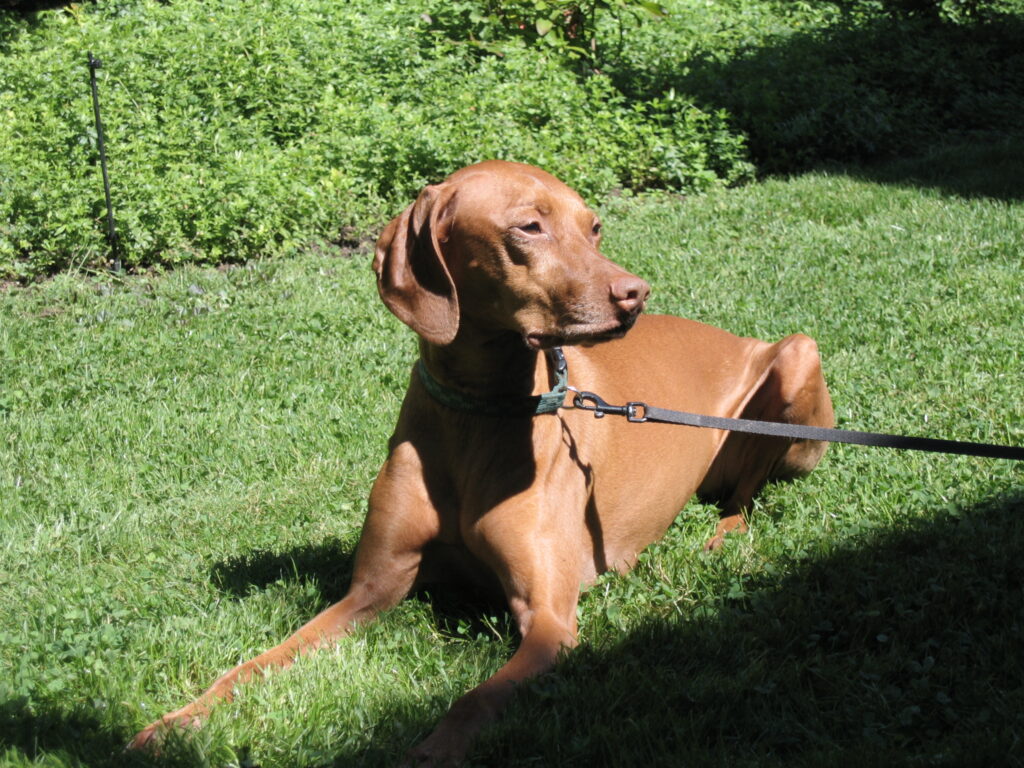
Drótszőrű vizsla or Hungarian Wirehaired Vizsla
Wirehaired Vizslas are close relatives of Vizslas but a distinctly separate breed. The key distinguishing feature is coat type. Unlike the sleek Vizsla, WVs have a dense wiry coat, with a shaggy beard and eyebrows setting off a bright, lively expression. Both Vizsla breeds are classified as medium-sized, but an ideal WV will stand somewhat taller and be a bit heavier than his smooth-coat cousin. The two breeds share the same striking red colouring (golden-rust), with a nose and eyes that smartly complement the coat.
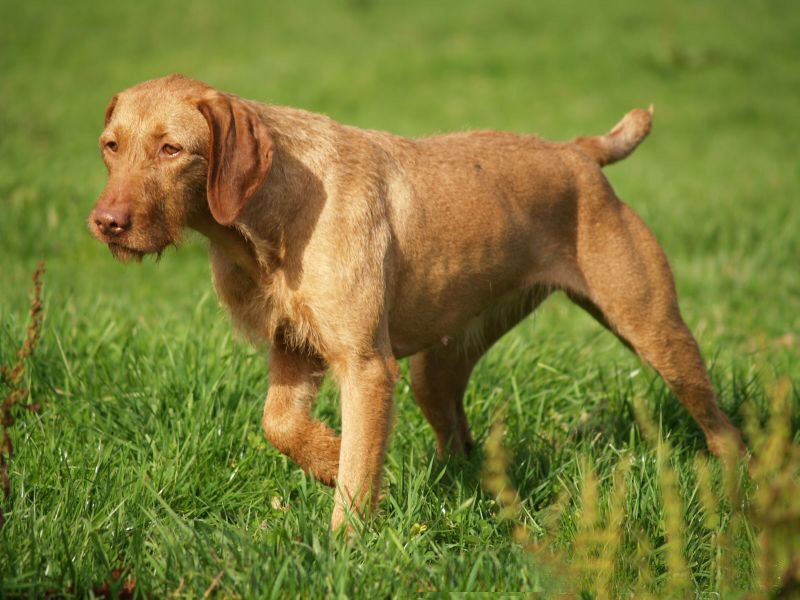
Erdélyi kopó or Transylvanian Hound
It is one of the least known and most endangered Hungarian dog breeds. The reason is that the importance of the original purpose of this breed has decreased, and at the same time it has not become popular enough among hobby dog owners either. Its ancestor, the Pannonian Hound arrived in the Carpathian Basin together with the Magyar tribes over 1,000 years ago and the erdélyi kopó was born as a crossbreed between the Pannonian Hounds and dogs native to the Carpathian Basin. It is a scent hound that can be also used for retrieval. Due to its medium size, its body is athletic, lean, muscular, and its movement balanced and elegant. Its playful nature make it an ideal family favourite, and its courage and loyalty make him a good guard. It is a scent hound that can be also used for retrieval.
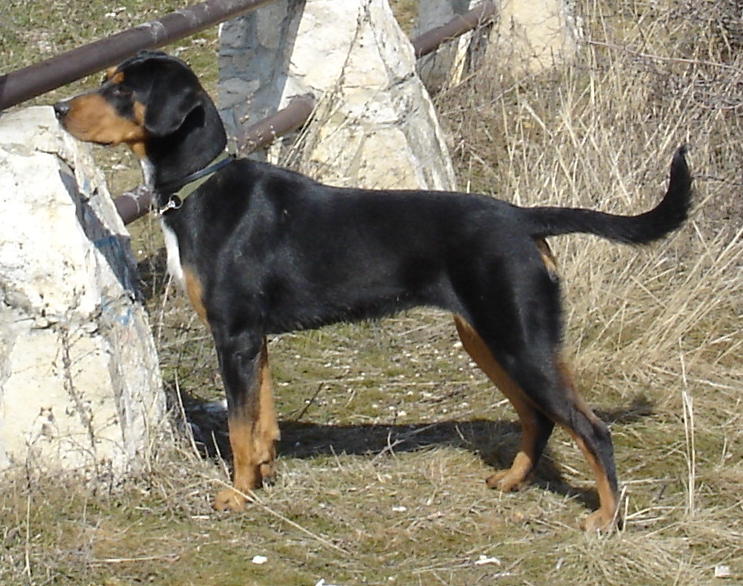
Sources used: Akc.org/Dogster.com/Hungarikum.hu/Pumiclub.org/Northamericanmudialliance.com/Transylvanianow.com
Related articles:

